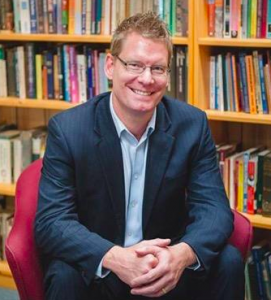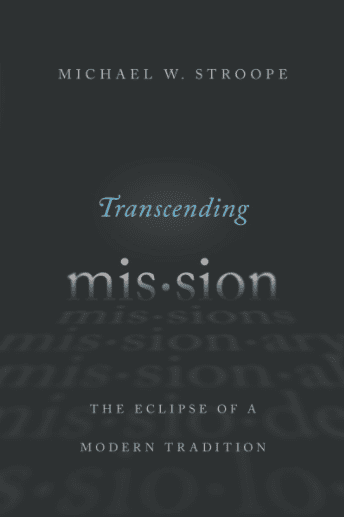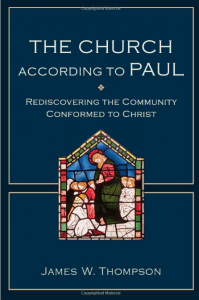 There is this problem — and it’s endemic to America — of thinking that if a church idea works in one place it will work elsewhere because the magic potion has been discovered. Sometimes church ideas can be replanted in other locations, but churches don’t succumb to the cookie cutter approach. The best churches don’t use a magic potion but instead know the magic of location. This magic of location is today called missional.
There is this problem — and it’s endemic to America — of thinking that if a church idea works in one place it will work elsewhere because the magic potion has been discovered. Sometimes church ideas can be replanted in other locations, but churches don’t succumb to the cookie cutter approach. The best churches don’t use a magic potion but instead know the magic of location. This magic of location is today called missional.
Missional challenges replicable.
What are some specific features of the “cookie cutter church” mentality?
(E.g., Our church has a young hip worship band leader, a visitor sees that and says, “That’s what the young generation wants, so let’s find a young hip worship leader.”)
The magic of location, the magic of missional, can however be described as a kind of missional theology. No one is doing this better today than Graham Hill, and I am reading his Global Church: Reshaping our Conversations, Renewing our Mission, Revitalizing our Churches. The distinguishing mark of Hill’s work is that he not only knows the major theologians but also knows what missional looks like in Majority (not Third) World churches. The book is loaded with non-Euro voices, and this is why we need this kind of book: the future of the church can be found in the pages of Hill’s book!
The old world “contextualization” is not outmoded; in fact, it’s all over this chapter. Contextual mission, he says, is essential and biblical:
Scott Moreau defines contextualization as “the process whereby Christians adapt the forms, content, and praxis of the Christian faith so as to communicate it to the minds and heart of people with other cultural backgrounds. The goal is to make the Christian faith as a whole—not only the message but also the means of living out of our faith in the local setting—understandable” (48).
Contextual mission is also kingdom oriented (and he uses “kingdom” broader than do I) and incarnational (and here he’s got the right ideas: incarnational does not just mean accommodation, adaptation, etc, but also transformational). Hill is a Transformationalist in the church-state political engagement taxonomy:
The responsibilities of the kingdom of God reach beyond the personal and church-based dimensions of our lives. They reach into the social and public realms of the church’s witness within societies. The church cannot avoid its political role; it cannot ignore the way in which Jesus calls it into a transforming relationship with cultures and with creation. The church must confront cultural powers and principalities. These include materialism, sexism, exploitation, lust, pride and greed. And it needs to confront these things when they are present within the structures and relationships of the church (51).
In addition, contextual mission is integral (holistic, pervasive) and transformational.
All of this leads Graham to these following theses, and I call these principles the Cookie Cutter Church Challenge — if you adhere to these and work these into your church, it will be both missional and non-replicable.
1. Contextual mission understands that mission is “a permanent and intrinsic dimension of the church’s life.”
2. Contextual mission focuses on the missio Dei and its consequences for the missional activities of the church. The church is missional as it plugs into what God is doing — God’s mission (missio Dei).
3. Contextual mission considers the missional “marks” of the church. This has been a Western and theological discussion. Hill proposes these as Majority World churches:
Missional churches cultivate glocal awareness and missional theology. They foster contextual and integral mission. They nurture indigenous expressions of church and theology and faith. Missional churches liberate the whole person. They welcome the stranger. They embrace the Spirit. And they care for creation. Missional churches are ethical communities. They transform neighborhoods and seek the welfare of the city. They devour Scripture. Missional churches reimagine theological education and ministry training, so that mission is central. They recover beauty—artistic, literary, natural, physical and other forms of beauty. Their leaders practice servantship. They recover authentic community. Missional churches develop missional spirituality and discipleship. 63
4. Contextual mission immerses itself “in the concrete situations of the disenfranchised of our societies and [witnesses] to the lordship and saviourhood of Christ from within.”
5. Contextual mission seeks to embody the gospel of Christ in all cultures.
6. Contextual mission demands that we “place the totality of life under the lordship of Christ in [our] historical situation.”
7. Contextual mission translates and communicates the gospel “in the Ianguage and culture of real people in the particularities of their lives.”
8. Contextual mission is shaped around the kingdom of God and the incarnation of Christ.
9. Contextual mission must also be integral mission.











